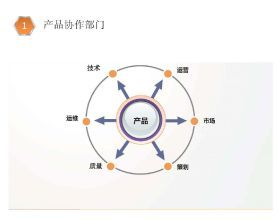NO.3-3 sectionB-S
Feelings of hopelessness amongmedieval workers trapped in the poverty cyclegradually lessened as it became possiblefor women’s labor to supplement a family’s money income bymore than pennies. By 1300, women spinnerscould be found working on their own for wealthy sponsors,even after the introduction in Italy and France ofprohibition against advancing money for suppliesto women spinners. Historians have usuallyinterpreted this prohibition simply as evidence ofwomen’s economic subjection, since it obliged them to turn tousurers; however, it was alsoalmost certainly a response to a trend toward differentialreward for women’s higher skill. Yarn canbe spun irregularly and lumpily, but perfectlysmooth yarn is worth more. Working for merchant entrepreneurs ontime rates, women had been paidhardly more than children;working as entrepreneurs themselves and producing good workby the piece, they could break into the rationalsystem of differential rewards.
23.The primary purpose of the passage is to
主题题:TS,文章结构,态度
(A) propose and defend a theory about the consequences of a certainhistorical event
(B) present historical facts and offer a broaderinterpretation of those facts than has been offered in thepast
(C) describe the socioeconomic effects of a widely held attitudeduring a particular historical period
(D) demonstrate the superiority of using an economic approach tohistorical analysis
(E) call attention to the influence of the textile industry onsociety during a particular historical period
24.It can be inferred from the passage that theauthor views the system of paying all workers equally ontime rates as
(A) unfair and not rational
(B) undesirable but unavoidable
(C) efficient and profitable
(D) advantageous to most women workers
(E) evidence of a trend toward a more modern wage system
25.The passage implies which ofthe following about women spinners in medievalEurope?
取非题:By 1300, women spinners could be found working on their ownfor wealthy sponsors, even after the introductionin Italy and France of prohibition againstadvancing money for supplies to women spinners.强对比
(A) Most of them worked independently for wealthy sponsors.
(B) They were not typical of medieval women entrepreneurs.
(C) Some of them were paid for their workafter it was done, according to itsvalue.
(D) They would have been able to contribute substantial amounts totheir families incomes were it not for the prohibition againstadvancing money to them.
(E) They were inevitably disadvantaged in the marketplace becausethey were obliged to obtain money for their supplies fromusurers.
26.The passage implies thatfeelings of hopelessness among medievalworkers
细节题:Feelings ofhopelessness among medieval workerstrapped in the poverty cycle graduallylessened as it became possible for women’slabor to supplement a family’s money income bymore than pennies.
(A) resulted primarily from the lack of a rational system ofdifferential rewards
(B) disappeared completely once medieval textile workers were ableto break the cycle of poverty
(C) were more prevalent among female workers than among maleworkers
(D) came into being in part because of women’slimited earning capacity
(E) were particularly common among textile workers in Italy andFrance
27.The author suggests that historians have donewhich of the following?
细节题:Historians have usually interpreted thisprohibition simply as evidence of women’s economicsubjection, since it obliged them to turn tousurers; however, it was alsoalmost certainly a response to a trend toward differentialreward for women’s higher skill.
(A) Failed to give adequate consideration to the economiccontribution of women during the medieval period.
(B) Overestimated the degree of hopelessness experienced bymedieval workers trapped in the poverty cycle.
(C) Ignored the fact that by 1300 many women spinners wereworking independently rather than for merchantentrepreneurs.
(D) Regard the economic status of women in Italy and France asrepresentative of women’s status throughout medievalEurope.
(E) Overlooked part of the significance of aprohibition governing one aspect of yarnproduction in medieval Europe.与“a trend toward”形成对比
 爱华网
爱华网


